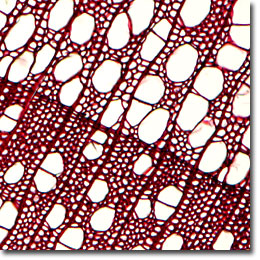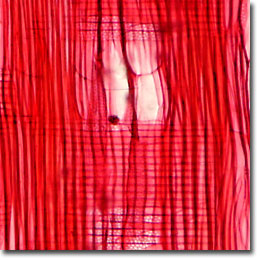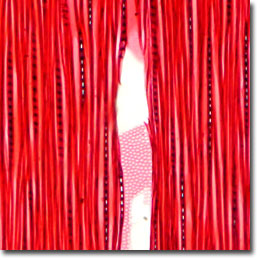The Balsam Poplar
Balsam Poplar (Populus balsamifera) is a softwood tree (commonly referred to as a Cottonwood) found primarily from the northern part of British Columbia to the eastern part of the Rocky Mountains. Rare occurrences are also reported on the Queen Charlotte Islands and northern outer coast of Vancouver Island. The sapwood is a whitish color with the heartwood being slightly darker with a grayish-brown cast.

Cross Section

Radial Section

Tangential Section
An ointment, called Balm of Gilead, was once made from the winter buds of the balsam poplar tree and was widely used to relieve congestion. The buds contain a waxy resin with disinfectant properties and this resin is still used in many modern (now termed "organic") natural health ointments. Bees collect the resin and use it to seal the hive from intruders, such as mice and other insects, which might have detrimental effects on the hive. Balsam Poplar is used for high-grade book and magazine paper, as veneer for the manufacture of plywood for furniture, and in musical instruments and fruit containers (such as berry boxes). The lumber is also useful for pallets, crates and boxes, and is often used to build concealed parts in furniture manufacturing.
Microscope examination of stained (iron-alum hematoxylin and safranin; see above) thin sections made from balsam poplar wood reveals widely diverse vessels (both large and small) with simple perforation plates and inter-vessel pits being orbicular to oval or angular. The parenchyma is marginal, forming a narrow, continuous and uninterrupted line. Libriform fibers are coarse (sometimes very coarse) with thin to medium-sized walls. The rays are unstoried, uniseriate, and homocellular. Bordered and simple pits leading to vessels are confined to the marginal cells, but occur in occasional rows along the body of the rays.